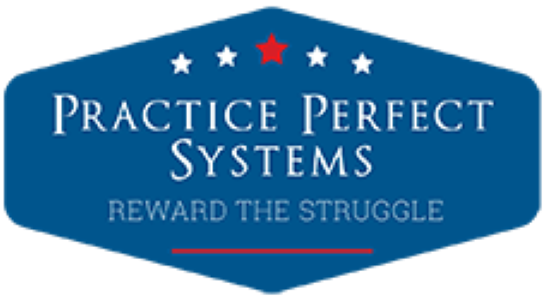We all need to start somewhere. Think of the first time you put a mirror and explorer into your hands- uncomfortable right? I am going to start with a few stories where I am certain you can relate, followed by a challenge to become comfortable when discussing HPV, a known risk for oral pharyngeal cancer.
My son, like many children, was always trying to one-up us. Kids love to do that to their parents. When he was about 11, we were sitting at the dinner table, where we often discussed the day’s events, and he proceeded to inform us that he learned something new. The intimation was that it was something we, his parents, knew nothing about. Of course, we bit. “What did you learn?” we asked.
His response?
“I learned about the NEW SEX.”
“And what might that be?” we asked.
“Oral Sex” he giggled.
After my wife and I bit our tongues to help suppress our laughter, we asked him where he learned this NEW revelation. He told us how his friend shared what he read and saw in a magazine his father hid under his bed.
This was in the 80’s, when HIV was a death sentence. And so, we had a CRUCIAL CONVERSATION with our 11-year-old about sex and the transmissibility of a deadly virus.
A year later our then 8-year-old daughter proceeded to ask her grandfather, out of love and concern for his wellbeing, if he wore a condom during sex with grandma. She had been listening to TV commercials promoting safe sex via condom use. She didn’t want grandpa to die!
My father in-law didn’t need a cardiac stress test that year.
Had she said that to my mother-in-law, her grandma, she would have dropped on the spot.
As parents, we had to get comfortable having uncomfortable conversations with our children. In the 80’s and 90’s, these discussions were a matter of life and death.
Today, they still are. Not about the HIV virus, which in the USA is no longer a death sentence, but for HPV, which can be transmitted to the oral and pharyngeal areas via the “NEW SEX” my son had discovered.
When you were in dental or hygiene school did anyone teach you how to ask someone about their sexual activities? Was that something you could even do in an open operatory system without breaching HIPAA?
While asking about sexual activity might be uncomfortable, it’s not nearly as uncomfortable as the possible consequences. And that’s what knowing about sexual activity is all about, RISK ANALYSIS.
According to the National Cancer Institute, “In the United States, high-risk HPVs cause 3% of all cancers in women and 2% of all cancers in men. Each year, there are about 45,000 new cases of cancer in parts of the body where HPV is often found, and HPV is estimated to cause about 36,000 of these.”
According to the CDC, “You can get HPV by having vaginal, anal, or oral sex with someone who has the virus. It also spreads through close skin-to-skin touching during sex. A person with HPV can pass the infection to someone even when they have no signs or symptoms.”
According to Cancer.net, “In the United States, the overall 5-year survival rate for people with oral or oropharyngeal cancer is 67%.”
What that means is that within 5-years, 23% of people diagnosed with these cancers will DIE!
Not the odds I would like.
When a patient is screened for risk factors for cancer, habits such as smoking and alcohol use are discussed. But what about the activities that raise the risks for HPV?
Some fear that this question might offend a patient. But if this question is asked in the spirit my daughter asked her grandfather about his condom use; out of compassion, caring and concern, it will more than likely be taken as such.
And if there is a risk, why wouldn’t you test the patient’s saliva for HPV?
“Does my insurance company cover this?”
My response, should I know that insurance might not cover it, would be; “Do you gamble?”
If the patient says yes, then my response would be; “With your life?”
Crucial conversations can be uncomfortable for both practitioner and patient. The process can be made less so through education and PREFRAMING that occurs prior to the appointment.
How many dental websites discuss RISK ANALYSIS and the benefits this approach has for the patient?
There are many resources that can be communicated to patients from trusted sources.
Here are just a few.
https://www.mountsinai.org/locations/head-neck-institute/cancer/oral/hpv-faqs
https://my.clevelandclinic.org/health/diseases/12180-oropharyngeal-cancer
https://www.mayoclinichealthsystem.org/hometown-health/speaking-of-health/hpv-infection-and-mouth-throat-cancer
https://www.mdanderson.org/publications/conquest/driving-the-hpv-associated-cancer-prevention-message-home.h34-1592991.html
Using these trusted AUTHORITIES as resources can help preframe any conversation.
Using CELEBRITY too can make the discussion more relevant and real. Martina Navratilova’s diagnosis of oropharyngeal cancer can be a powerful way to get people to pay attention and remove any stigma to a screening process. (https://www.washingtonpost.com/wellness/2023/01/03/hpv-throat-cancer-symptoms-causes/).
If your website does not discuss your concern for cancer and the risk for other oral-systemic diseases, this is a great opportunity for your practice to shine and outshine the competition. It can be your Unique Value Proposition, CARING FOR ALL OF YOU.
Salivary testing is a great way to perform risk analyses. The crucial question you should ask yourself is WHY NOT?
To mitigating risk factors and showing compassion to your patients,
Michael
- Flying Blind: A Wake-Up Call – Part One - June 27, 2025
- The Hidden Threat to Dental Implants: Why Ignoring Bacteria is a Risky Gamble – Part 2 - March 14, 2025
- The Hidden Threat to Dental Implants: Why Ignoring Bacteria is a Risky Gamble – Part 1 - February 28, 2025


